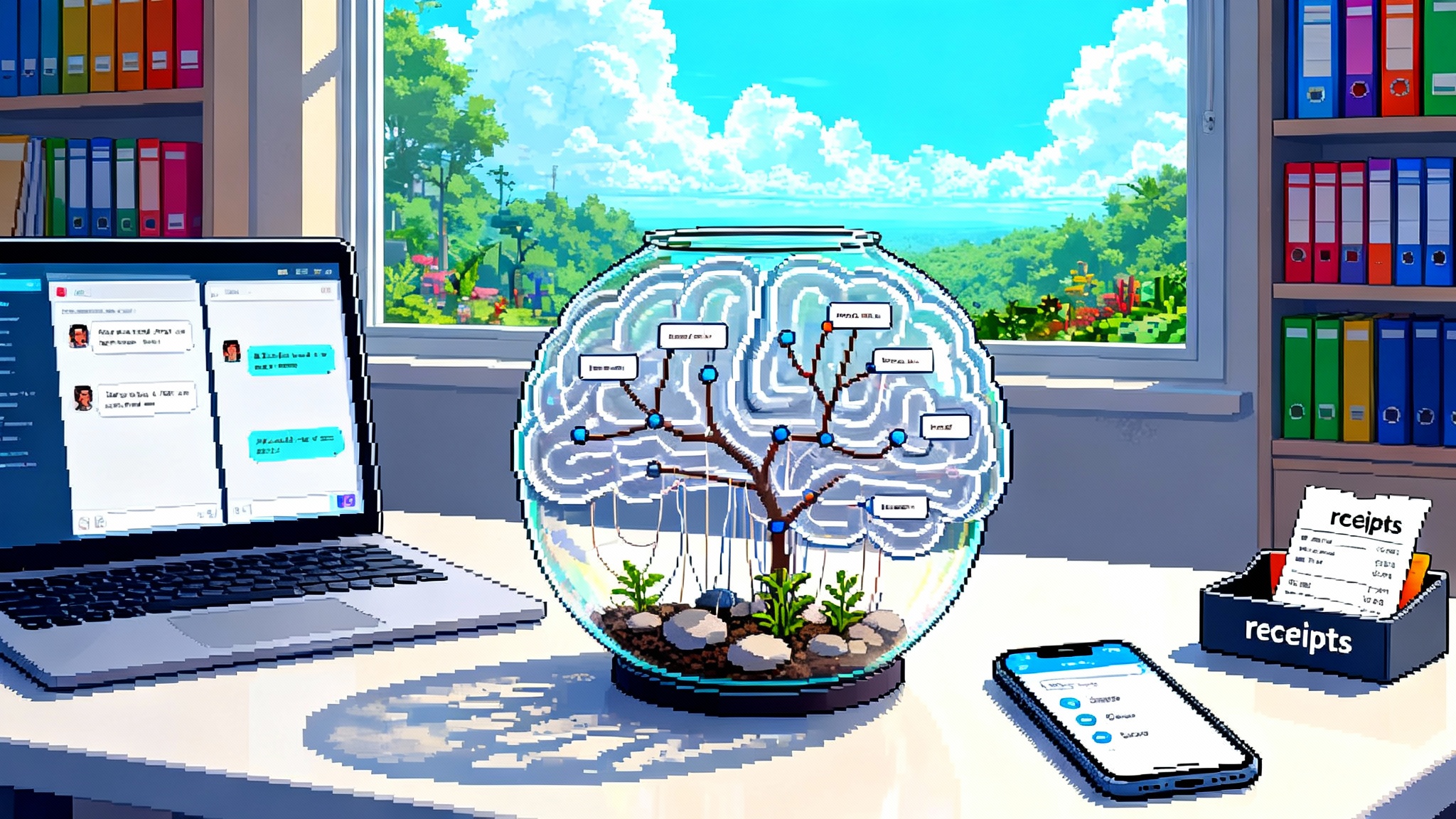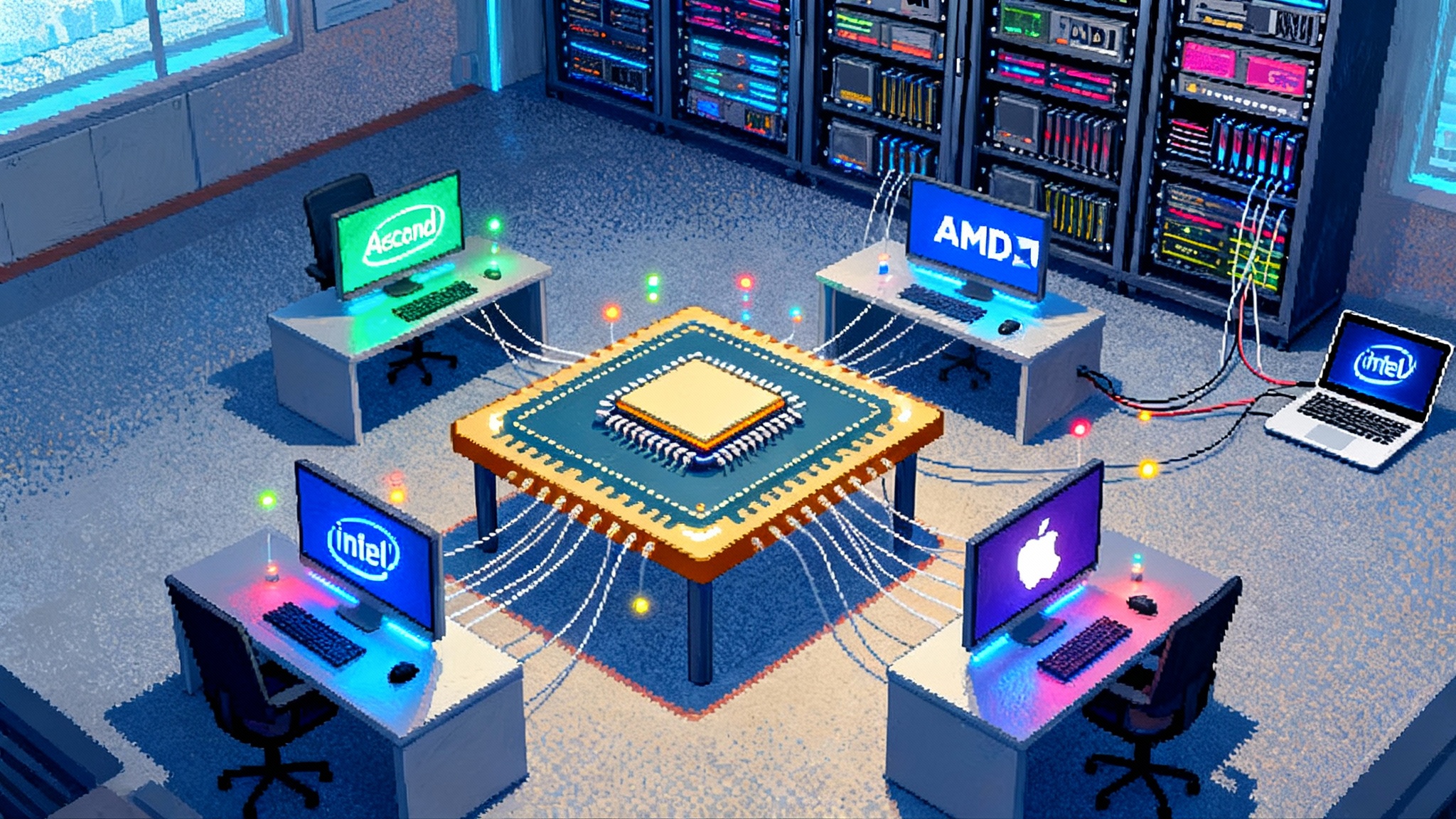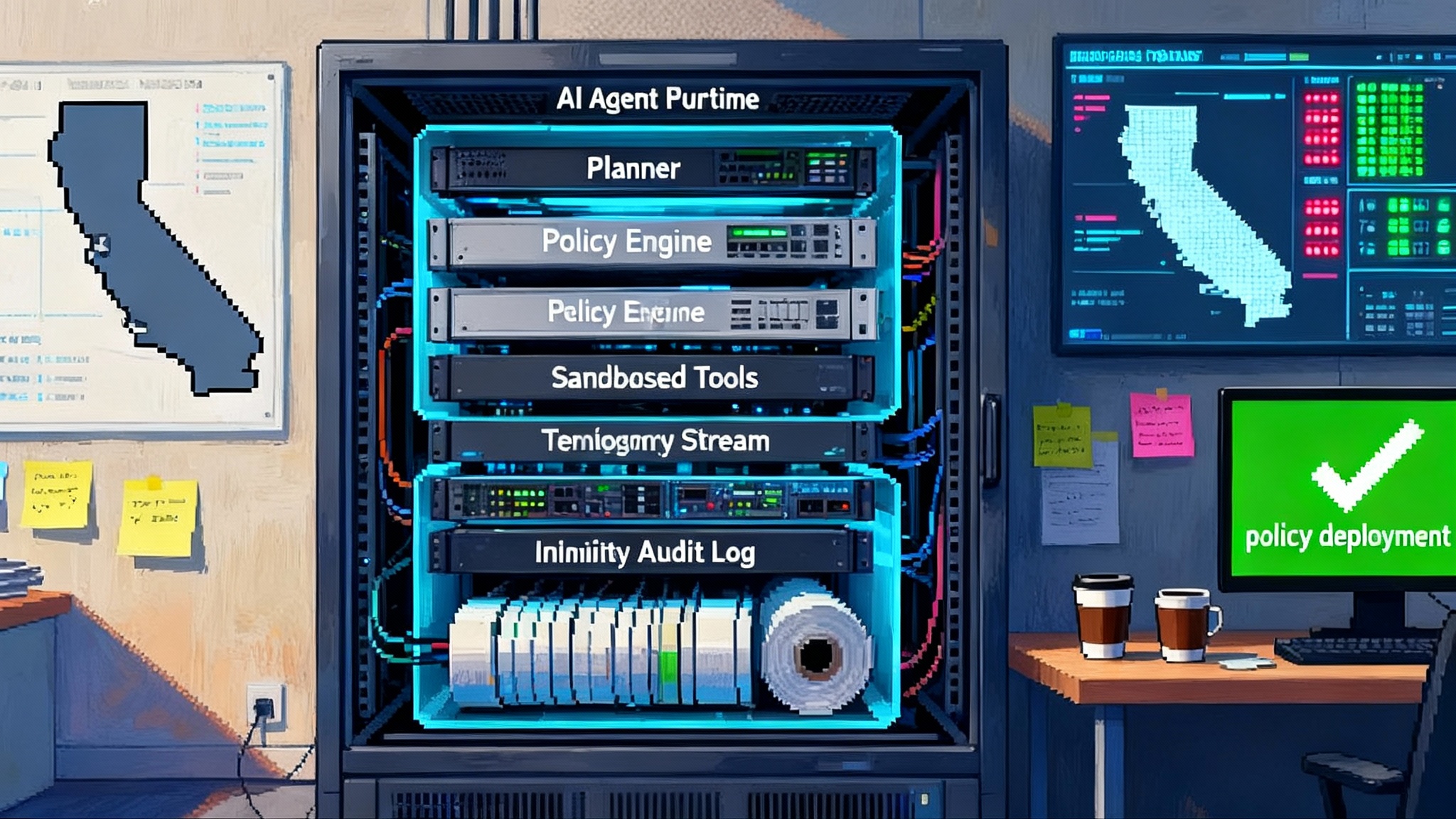The Home Graph: A Domestic OS for Everyday Intelligence
Smart homes are moving past scenes and scripts toward a living home graph that understands roles, routines, and constraints. Here is how a domestic operating system plans across rooms, acts safely, and earns lasting household trust.

The home wakes up
The most interesting interface for artificial intelligence is not a chat window on a phone. It is your kitchen, your hallway thermostat, the door camera, the speaker that can tell a parent from a teenager, and the calendar that already knows soccer practice lands on Tuesdays. The home is becoming an AI native interface, a persistent environment where models can internalize household habits, plan across days, and act with minimal prompting.
This shift matters because a home is not a single user app. It is a live, multi user system with memory, rhythms, and constraints. A model that lives in this system can draw on ambient signals that do not exist on a laptop: motion and presence, door and window states, temperature and air quality, light levels and power consumption, music zones and televisions, even the pattern of how people move from kitchen to living room on weeknights versus weekends. With that context, assistants stop answering one off questions and start coordinating outcomes. They nudge the dishwasher to run after the water heater recovers from a shower. They lower the blinds fifteen minutes before sunset on hot days. They pack lunches because the fridge knows groceries arrived this morning and the calendar knows there is an early bus tomorrow.
If the last decade was about voice commands and scenes, the next decade is about plans that survive disconnections, permissions that make sense to kids and grandparents, and explanations that are easy to trust.
Why domestic context bends the curve
Large language models are good at text. Homes are not text. They are graphs of people, rooms, devices, schedules, and constraints that evolve minute by minute. The home turns raw model capability into leverage because it provides three advantages that traditional computing contexts rarely deliver at once.
-
Persistent identity across people. A home sees individuals, roles, and groups. It knows that Alex and Morgan are parents, that Luna is the child who goes to bed at 8 p.m., and that a visiting grandparent needs simplified voice commands.
-
Continuous sensor feed. Instead of a single prompt, the home supplies a timeline of ambient events.
-
Actuation across many devices. The model can turn intent into verbs that touch lights, locks, ovens, vacuums, speakers, sprinklers, and scenes.
In effect, the home gives the model a live state machine. That machine exposes the gaps in current assistants. A single prompt is not enough. The model needs a plan that stretches across hours, a memory that survives reboots, and a contract for what it may or may not do without asking. Once those exist, the model stops being a conversational partner and becomes a domestic operating system, the orchestration layer that senses, decides, and acts on behalf of a household.
Earlier, we explored why memory becomes a moat. The home is where that thesis becomes concrete because it fuses identity, schedule, and environment into a durable context that compounds.
Rooms as cooperative agents
Think of each room as a polite coworker with a job description. The bedroom cares about temperature, light, and noise for sleep. The kitchen cares about appliances, food inventory, and clean surfaces. The entryway cares about doors, cameras, and packages. A domestic operating system assigns small agents to each room and a coordinator that resolves conflicts.
A concrete example looks like this. At 6:30 p.m., the kitchen agent notices that the oven preheat sequence is almost done. The living room agent sees that the television is on and a game is paused. The household coordinator knows that dinner is usually at 6:45 p.m. on weekdays and that three people are home. The system dims the living room to a warm preset, queues a five minute countdown overlay on the television, starts the vent hood, and bumps the dining room lights five minutes before plates usually hit the table. Nobody asked for this in a prompt. The system matched patterns, validated identities, and executed a plan that fits the household.
The same model works for mornings. If the motion graph shows people waking later on Saturdays, the blinds open later, the espresso machine preheats at nine rather than seven, and the robot vacuum moves breakfast crumbs after the kitchen clears. These are long horizon loops. They rely on daily context, not a single command.
The home graph, defined
To make this work, the system needs a home graph. The home graph is the living data structure that represents people, rooms, devices, capabilities, routines, permissions, and constraints. It is not a contact list. It is a model of who lives here, who is a guest, who can unlock which door, what the thermostat can do, what the oven can do, where the smoke detectors are, and when the sprinklers should avoid watering because laundry is running.
A practical home graph includes:
- People and roles: individuals, groups such as Family or Guests, and role based permissions.
- Rooms and zones: named spaces with boundaries and relationships.
- Devices and capabilities: a capability ontology that says this device can heat, this device can lock, this device can play audio in zone X.
- Routines and habits: learned sequences over time, from bedtime rituals to Wednesday garbage night.
- Constraints and policies: quiet hours, power budgets, safety interlocks, pet modes.
- Schedules and external signals: calendars, commute times, energy prices, and weather.
Once the home graph exists, assistants move from brittle scenes to adaptive policies. Instead of a hard coded Goodnight scene, the system runs Goodnight as a policy that adapts to who is home, whether the dishwasher already ran, and whether the air quality sensor suggests a window should stay cracked for fifteen more minutes.
Fault lines we must cross
The acceleration is real, but so are the edges where products fail. Four areas will define who wins.
1) Household identity graphs
Most assistants still default to the account holder. That is wrong for domestic settings. A winning system must resolve identity across voices, devices, and presence without friction. It needs person level profiles tied to voices, faces at the door, and phones on the local network. It needs role level policies for Children, Teens, Adults, and Guests. It needs group level rules such as Parents that can override oven locks or disarm alarms.
Identity also needs continuity across hardware. If the phone leaves the house, the living room speaker should still know who is home based on voices and motion. If a grandparent visits, the system should grant guest permissions automatically when a guest pass is shared, then revoke them when the phone leaves for more than a day.
Action for builders: ship a single household identity model that spans your mobile app, speakers, displays, cameras, and cloud. Provide clear views where the administrator can see who is recognized, what they can do, and how to change it in one screen.
2) Consent defaults that make sense
Homes are not offices. Consent must be legible to a teenager, a guest, and a grandparent. The right default is to inform clearly, record minimally, and grant granular control.
Builders should adopt visible signals for active listening and recording. Use a bright indicator when audio is streaming or being stored. Provide one tap controls to pause ambient learning for a room or the whole house. Offer automatic expiration for sensitive logs such as door conversations and drop them from long term memory by default. Make retrospective consent possible. If a guest did not want to be recorded, allow the host to delete those events with a single action and produce a plain language confirmation.
Action for builders: implement household level privacy modes, room level pause, and per person data retention. Write them into the home graph as policies that agents must obey.
3) Privacy preserving inference and where it runs
The home is the most intimate environment most people have. That means model placement matters. Some inference can run on device for speed and privacy, such as local wake words, room classification, or routine detection. Other tasks can run in the cloud, such as heavy planning or cross household learning. The right design splits the workload.
A good split looks like this. Do always on sensing and first pass intent detection on device, where microphone or camera data never leaves the room. Summarize useful events into compact tokens. Send those tokens to the cloud only when needed. Allow a strictly local mode that forgoes cloud only features. Use encrypted logs for cross device coordination within the home, then erase them on a rolling schedule.
Action for builders: document compute placement clearly, provide a visible switch for local only mode, and design fallbacks so the home still functions if the internet is down. Prove that critical safety routines such as smoke alarms, door locks, and night lights never depend on the cloud.
4) Safety rails for autonomous action
An autonomous home must not be a mischievous home. Safety rails are the difference between assistance and chaos. The rails should include layered permission, dry runs before first execution, and explicit limits for risky actions.
Layered permission means some actions are always allowed, some require a routine to exist, and some require a person to approve each time. Dry runs mean the model simulates the plan and shows the household what would happen first. Risky actions, such as unlocking doors or turning on ovens, should be gated by multi factor prompts that involve the right person and the right device.
Action for builders: adopt a household permission matrix that maps capabilities to approval levels. Instrument every autonomous action with a kill switch and a clear audit trail. Teach the system to fall back to safe states when it is unsure.
The new moats
The cloud era rewarded distribution. The domestic era will reward context, orchestration, and trust. The strongest moats will form around three assets.
- Domestic context. A dense home graph, long lived and accurate, becomes a proprietary asset. It is the difference between a generic assistant and a household companion that anticipates needs.
- Orchestration muscle. The ability to run long horizon, low latency loops across heterogeneous devices. This includes discovery, capability mapping, conflict resolution, and real time control under unreliable networks and power.
- Trust. The combination of reliable safety rails, understandable consent, and predictable behavior. Trust compounds with each correct routine and each avoided mistake.
These moats reinforce one another. Better context improves orchestration. Reliable orchestration earns trust. Trust increases willingness to share context. The flywheel spins inside a home. For a deeper dive on trust as a resource, see how law inside the agent loop reshapes what agents can do by default.
Product patterns that work
The fastest way to see the future is to sketch it as shipping patterns. Here are patterns that fit the domestic operating system and can be built today.
- Chore autopilot. The system builds a weekly plan for laundry, dishes, and trash based on who is home, travel schedules, and machine availability. It assigns reminders to the right person, then quietly runs appliances within power and noise constraints.
- Sleep environment manager. The bedroom agent learns personal comfort levels, nudges ventilation and humidity, syncs with sunrise times, and mutes loud appliances in the early morning. It can ask for a one time exception when someone is sick.
- Food flow. The kitchen agent tracks pantry levels using camera or barcode hints, suggests meals that match time and energy budgets, preheats ovens at the right moment, and queues dishwasher cycles after hot water use. It respects cost and energy caps.
- Kid mode. A role based policy that limits content, locks dangerous appliances, and provides friendly voice feedback. It relaxes rules in the presence of a parent. It logs actions where the parent can see what changed and when.
- Elder care overlay. Fall detection, door reminders, medication prompts, and temperature safety. It notifies trusted caregivers only when a threshold is crossed and offers one tap video confirmation before escalating.
Each pattern depends on three ingredients. There must be a clean capability model for devices. There must be a scheduler that runs plans under constraints. There must be a human readable explanation layer that shows what happened and why.
Reference architecture for a domestic OS
Builders should converge on a reference architecture that product teams, device makers, and startups can share.
- Intent fabric. A layer that translates human goals into actions. It handles voice, touch, and calendar triggers. It publishes intents to the rest of the system.
- Capability ontology. A standard vocabulary for what devices can do. Heat, cool, lock, unlock, play, pause, clean, brighten, dim, open, close.
- Event stream. A privacy aware feed of room level events with timestamps, identities, and confidence scores. It aggregates on device, summarizes, and stores minimal history.
- Planner and scheduler. A planning model that uses the home graph and a scheduler that respects constraints and priorities.
- Safety and consent engine. Approval levels, household policies, and a runtime that enforces them.
- Local first runtime. A set of services that run on a home hub or high end speaker so that critical loops continue offline.
This is not a speculative diagram. It is a blueprint teams can ship. It is also where performance will decide the winner. The first platform that runs reliable long horizon, low latency loops across appliances, security, and services will own the home graph and with it a daily runtime for artificial intelligence that is hard to dislodge. For a complementary view on agents that continue working without a prompt, see systems that keep working offscreen.
Metrics that matter
Traditional monthly active user metrics are not enough inside a home. Measure what makes a household feel like the system is quietly competent.
- Minutes saved per day per person.
- Autonomy acceptance rate, the percentage of suggested plans that run without changes.
- False stop rate, how often a safety rail blocks a routine unnecessarily.
- Fanout latency from intent to action across a full stack of devices.
- Offline resilience window, how long critical routines continue during an outage.
- Explanation clarity score, a simple survey on whether people understood why the system acted.
These metrics force teams to optimize for lived experience, not just engagement.
Strategic implications for platforms
Different platform strategies will surface distinct early advantages. Some will lean on model strength and cross device reach to learn routines faster and act more fluidly. Others will emphasize responsiveness and consistency on affordable hardware, which matters because an installed base only wins if it feels instant and reliable. Still others will lean on on device processing that lowers latency and strengthens privacy, which can accelerate household trust. Each approach maps to a different early moat, yet they will collide in the same hallway because all must master orchestration and consent to truly live in the home.
For device makers, the message is simple. Expose capabilities in a standard ontology, publish state changes quickly, and support local control paths. If you make ovens, expose preheat times and door states. If you make locks, expose lock state, battery levels, and temporary codes through a secure local channel.
For startups, look for the edges the platforms will not touch. Build specialized agents for laundry, for energy optimization under real utility tariffs, or for pet routines that mix cameras, feeders, and doors. Nail the explanation layer so households understand changes at a glance. Partner with installers, property managers, and homebuilders who need reliable templates.
For policymakers, favor neutral standards for device capability descriptions and local control. Require visible recording indicators and audit trails that households can export. Encourage certification that tests safety rails and offline resilience, not just radio compliance.
What households can do now
You do not need to wait for a perfect platform. Small choices build the domestic operating system today.
- Choose devices that support local control and clear capability models. Favor products that continue basic functions when the internet is down.
- Group rooms thoughtfully. Name zones the way your family speaks. Use the same names across all apps and devices.
- Set consent defaults together. Decide as a family how long you want to keep voice logs, who can unlock doors by voice, and what night modes should do.
- Start with one long horizon loop. Pick mornings or dinner or bedtime. Teach the system your rhythm, then let it run for a week. Adjust once, then let it run again.
These steps help any assistant learn your household as a coherent unit, not a collection of gadgets.
The race for the daily runtime
The domestic operating system is a new daily runtime for artificial intelligence. It runs from the moment the first person stirs to the last light out. It has a precise sense of time, energy, and attention. It touches a hundred small decisions that add up to comfort, safety, and cost.
The unlock is reliable long horizon planning with low latency execution. That means a scheduler that can adapt every five minutes without feeling jittery. That means device control that works in unreliable network conditions. That means a memory that survives device reboots and power outages. Most of all, it means trust, earned through legible consent and consistent results.
We will know the winner when a home feels calm. When the dishwasher runs at the right time without being asked. When lights fade to warm as dinner ends. When doors lock by policy, not by habit. When the assistant stops talking and starts doing. The platform that builds this quiet competence first will own the home graph. With it comes a durable position in daily life that is larger than any app. The interface becomes the house itself, and the best model is the one you barely notice.
Closing thought
The domestic operating system is not a gadget fantasy. It is a practical stack that merges models, sensors, and schedules into a home that acts with you. The acceleration is real because the context is rich and the stakes are everyday. Build for identity, consent, privacy, and safety, then push planning and control until the house becomes a teammate. The first team to make that feel effortless wins more than market share. It wins a place in the rhythm of daily life, which is the one runtime that never closes.







